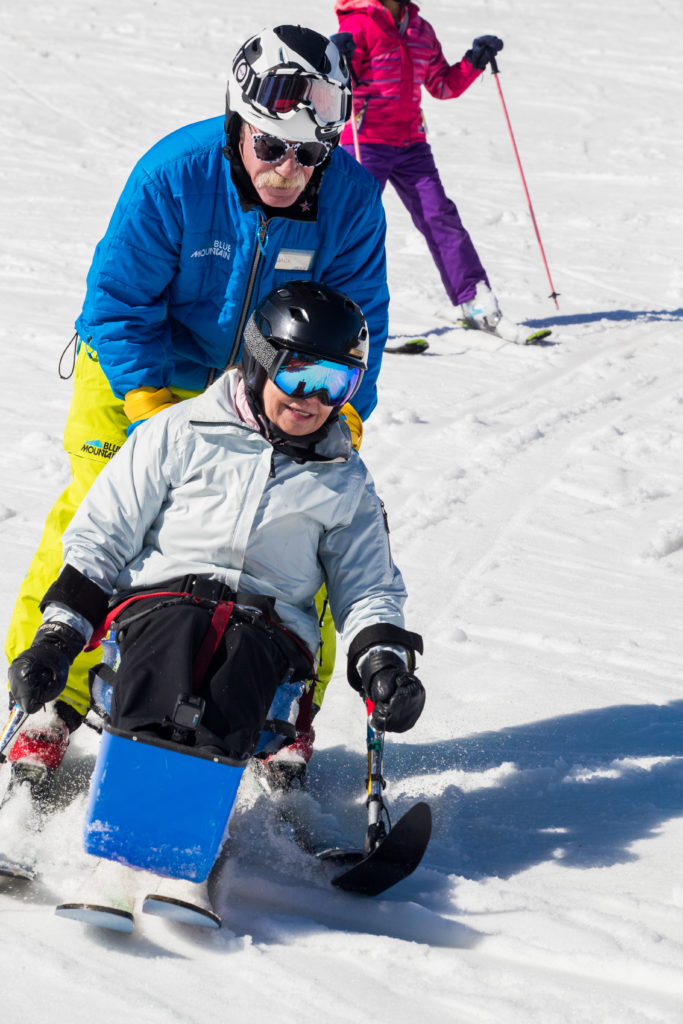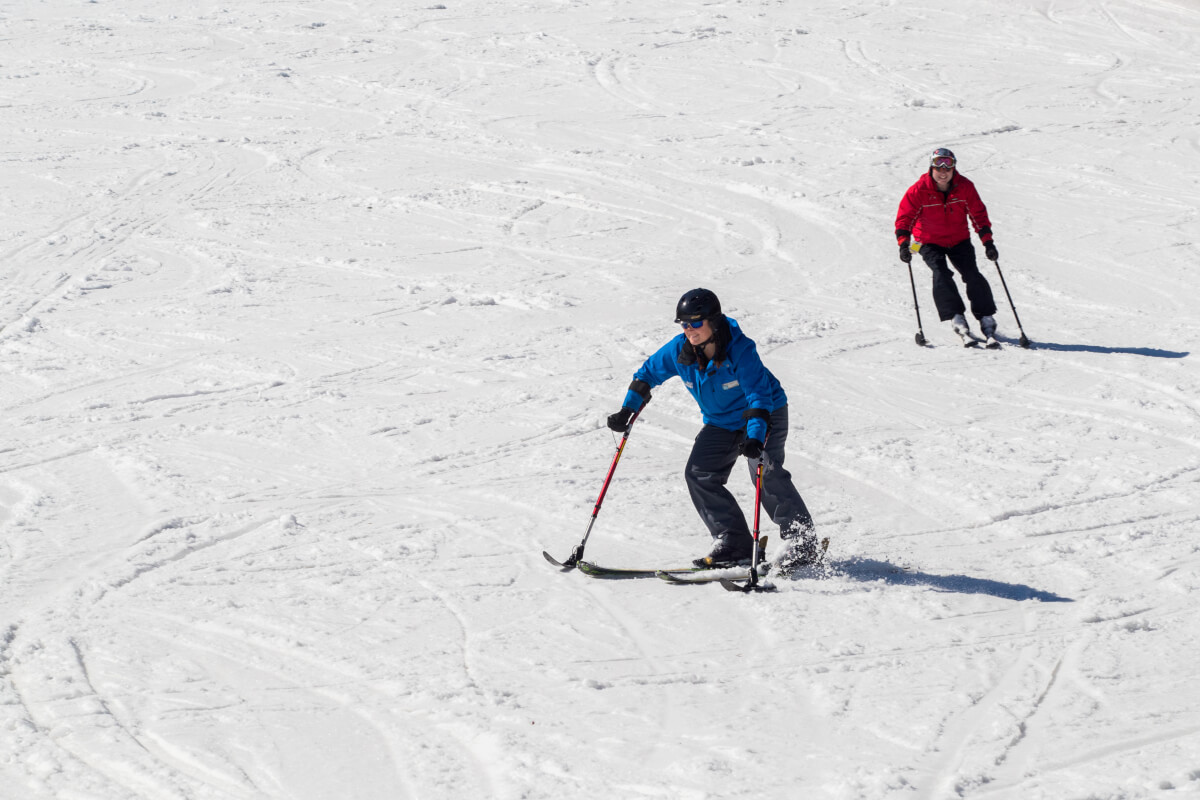Originally written By Lori Knowles for Blue Magazine
It took her two ski seasons, a ton of perseverance, and a great big heart, but Pam Visutski, finally did it. She taught two keen kids — aged seven and 10 and living with multiple sclerosis (MS) — how to ski with outriggers. Pam Visutski is one of Blue Mountain’s best advocate for the resort’s Open Slopes policy, a mandate to make ski and snowboarding as accessible as possible. Pam has 20-plus years of teaching on Canada’s slopes, the past six of which she’s devoted to assisting scores of individuals with disabilities with learning how to ski at Blue Mountain.
“First they were holding on to me,” Visutski says of her two young students. “But eventually they became able to move around on their own with outriggers.” Visutski points out that when her students are on skis, it’s the fastest they’ve ever moved independently. “When all of a sudden these children have mobility, when they can do it themselves, and when they can go really fast . . . well, the thrill on their faces is unbelievable.”
Visutski’s efforts are part of a bigger effort at Blue Mountain to open up its slopes — to make skiing as accessible as possible to as many people as possible
Adaptive Programs
Graeme Dugale is Blue Mountain’s Director of Recreation and Programming. He says Blue Mountain began developing its Open Slopes programming about 11 years ago, taking the lead from adaptive skiing initiatives from B.C.’s Whistler Blackcomb Resort.

“The demand for ski lessons for people living with disabilities has increased significantly,” Dugale explains, “likely thanks to the increasing popularity of the Paralympics.” Canada’s national para-alpine team, which includes ski racers who are double amputees, totally blind, living with cerebral palsy, or skiing with high degrees of paraplegia, compete in both World Cup and Paralympic races, often at the same venues as the women’s alpine World Cup circuit.
On the advice of local skier and teacher Gord Layhew, Blue Mountain developed programming based on the teaching practices of the Canadian Association for Disabled Skiing (CADS). “The key,” Dugale insists, “is that we offer the same options to disabled skiers as we do to those who are able bodied — programs that help them learn to ski.”
As a result, Adaptive Lessons are much the same as Blue’s Private Lessons but include access to equipment disabled skiers require, such as outriggers. Lessons are led by ski pros, who have been trained by CADS in techniques for teaching individuals with disabilities how to ski.
“Blue’s ski pros can teach all ages, levels of ability, and those with almost any physical disability,” Dugale says. “We teach skiers with hearing and visual impairments. We teach children with autism. We have Track-3 and Track-4 ski equipment on hand.” People with disabilities who require the assistance of a friend or family member will receive a free lift pass for their companion.
Adaptive lessons focus on the same skills as other beginner programs. “The basics are covered,” says Dugale. “From how to put on your boots, skis, and outriggers, to establishing goals, learning proper stance and balance, how to pivot and stop using outriggers, and how to move around on ski terrain.” Dugale says adaptive ski lessons also teach skiers how to ride both a carpet lift and a chairlift with success and comfort remaining paramount.
For more information on bookings visit: https://www.bluemountain.ca/plan-your-trip/lessons-and-rentals/snow-school/adaptive-skiing-private

